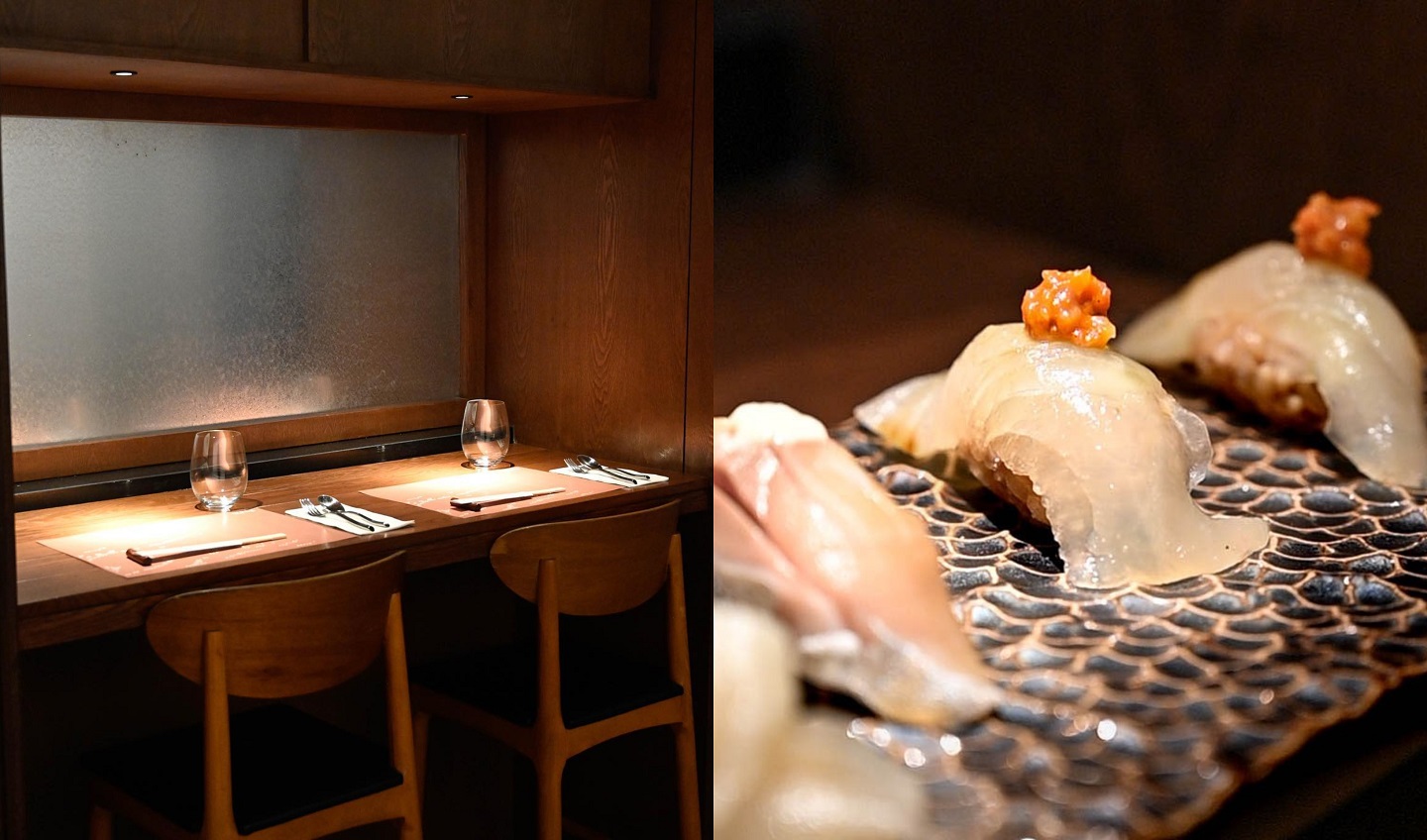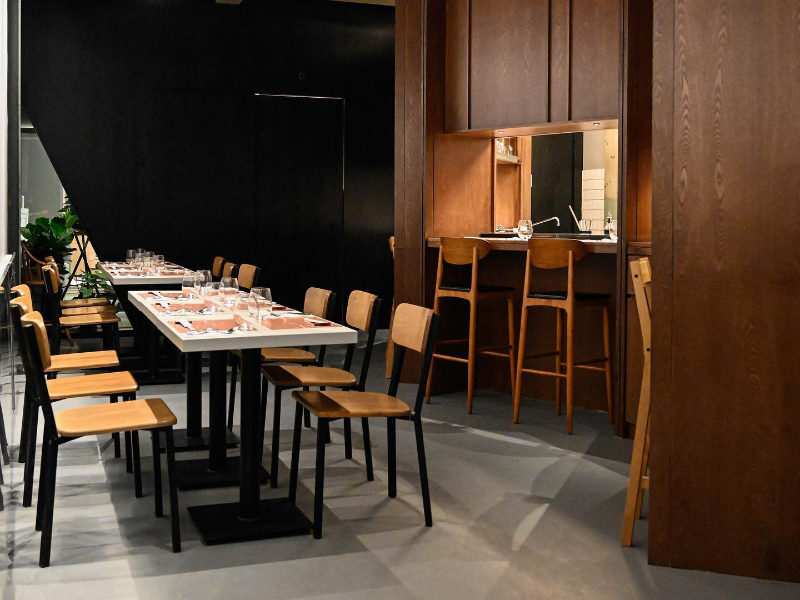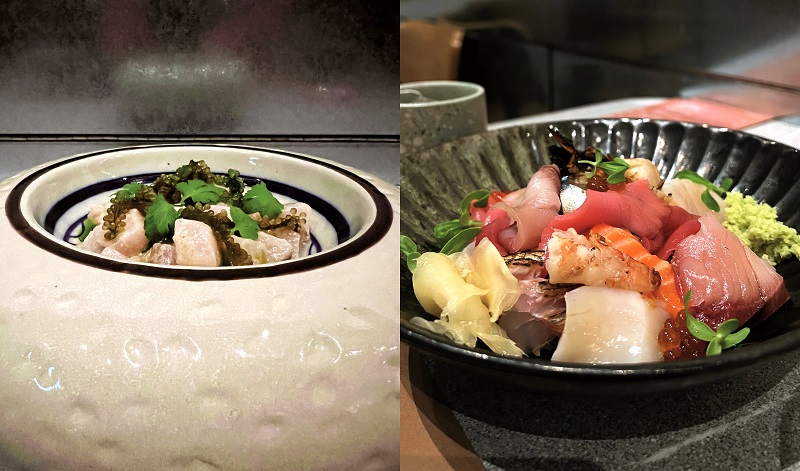
For those who prefer a more conventional Japanese-centric dining experience, select from the sashimi and nigiri sushi menu (Photo: Waig)
The city’s foodies are already well aware of Waig’s existence, which opened on Christmas Eve last year within the repurposed printing factory in Bangsar now known as APW — an acronym for A Place Where. APW has always been popular with the urban and urbane crowd, who visit for all manner of services, from drinking and dining at stalwarts like Pulp coffee, woodfired sourdough pizza specialists Proof and brunch spot Breakfast Thieves, to getting a cut and shave at 52 Barbers, picking up vegan skincare from Handmade Heroes or ordering a red carpet-worthy frock by local couturier Khoon Hooi.
Waig, pronounced wa-ik and which means “water” in Kadazandusun, continues the Sabahan-Japanese journey pioneered by husband-and-wife team Jack Weldie and Diane Ong, the talents behind Paramount Garden powerhouse spots Chipta11a and Awesome Canteen. But for the first time, far away from the couple’s preferred playground of Petaling Jaya.
Operating as a tapas-style sushiya (think small plates and slick service), Waig’s clean and spare interiors mirror the ethos: fuss-free but attention-arresting, much like the cuisine. Begin in a quintessentially Borneoan way by ordering the hinava (RM38), a traditional Sabahan dish featuring plump cubes of firm white fish cured in lime juice and topped with a variety of aromatics, such as julienned chilli and ginger, sliced shallots or even the dried grated seeds of the bambangan, a type of wild mango. But here and to our collective delight, latok was used. For those unfamiliar with latok, in Japanese cuisine, it is referred to as umibudo or “sea grapes”, and is essentially a superfood packed with minerals and dietary fibre. The texture and flavour also explains why others nickname it “green caviar”. Another surefire appetite-whetter would be the pickled cherry tomatoes (RM20), just ever so slightly anointed with kaffir lime leaf oil.
322078854_1284267055484371_8121869720075776390_n1.jpg

It is quite hard to avoid carbohydrates here but then, why should you? The maki rolls are delicious and, if you miss that inimitable Chipta11a zing where asam jawa (in lieu of rice vinegar) is used in the shari, you’d find that deliciously familiar flavour here as well, particularly in the Hon Maguro Futomaki (RM65 for half portion, RM130 for full) which is generously filled with akami, chutoro, cucumber and green chilli.
Although Waig’s look and feel is minimalistically trendy to a fault (and thereby a magnet for KL’s young, restless and moneyed), the provision of donburi (Japanese one-dish meals comprising simmered protein-topped rice bowls) makes it a great place for midweek family meals as well — freeing one or both parents from the kitchen’s shackles and ensuring Junior goes to bed with a full tum. The Aburi Akaebi Don (RM70) is the cheapest of the four options (the rest being Szecuan scallop and ikura, anago and engawa, and sashimi at RM100 each) but is clearly the crowd favourite, thanks to deliciously earthy notes courtesy of kulim fruit emulsion and sambal.
Another item that demands a try is the Pinarasakan (RM53), a tangy fish dish that is traditionally prepared using takob akob, a local sour asam-like fruit, and the aforementioned bambangan. Here, chef Weldie smears Spanish mackerel with his special asam jawa tare before drizzling it with turmeric leaf emulsion — in all, an elevated, elegant take on the humble fare that is a mainstay of areas like Ranau, Kota Belud and Kota Marudu.
waig2.jpg

If you simply must have your food licked by fire, do not miss the wonderful Australian gyutan (beef tongue), prepared sous vide for at least eight hours before being glazed with chashu sauce and served with pickled plum and green chilli sauce (RM65). The grilled Ming prawns with tuhau (a type of Sabahan wild ginger) mayonnaise and belacan emulsion (RM55) as well as the Japanese squid with kangkung puree and peanut crumble (RM68) also sound tempting, but the filling donburi demands that a second visit is in order to fully enjoy the repast without giving in to gluttony.
For those who prefer a more conventional Japanese-centric dining experience, select from the sashimi and nigiri sushi menu. And if you simply don’t want to decide, just opt for the hassle-free sets that are priced at RM150 and RM380 for six and 12 pieces of assorted sushi respectively.
In terms of pudding, there are only two desserts on offer as of now — a sea salt or strawberry kakigori (RM35 each), both of which, sadly, did not embody the same creativity and experimental streak the rest of the menu showed. Personally, a second round of libations might bring the night to a more agreeable close at Waig. The well-appointed drinks menu gives you your pick of craft beers from Japan, Australia, England and Ireland, as well as saké, sparkling saké and sparkling Japanese juices made using yuzu, ume, mikan or Fuji ringo (apples).
Multifaceted is an often overused adjective these days but you’d find Waig encompassing it perfectly, making it a perfect spot for a multitude of occasions, from date night to casual family dinners or even a drinks-pairing feast with friends. Perhaps that’s why it is named Waig after all, water being one of the most multifaceted and precious elements on the planet.
Waig by Chipta11a, C-02, APW, 29 Jalan Riong, Bangsar, KL. Wed-Sat, noon to 2.30pm; Tue-Sun, 6-10pm. For reservations, call 011 3992 7269.
This article first appeared on Feb 13, 2023 in The Edge Malaysia.


